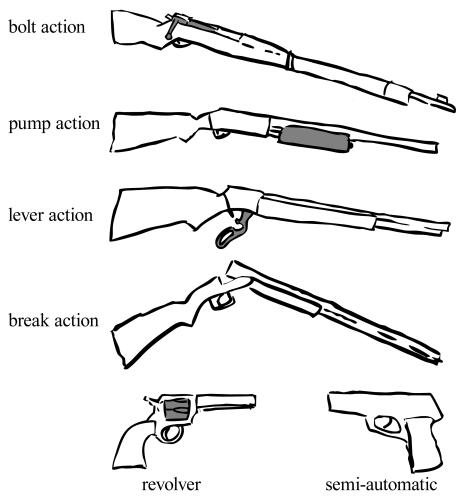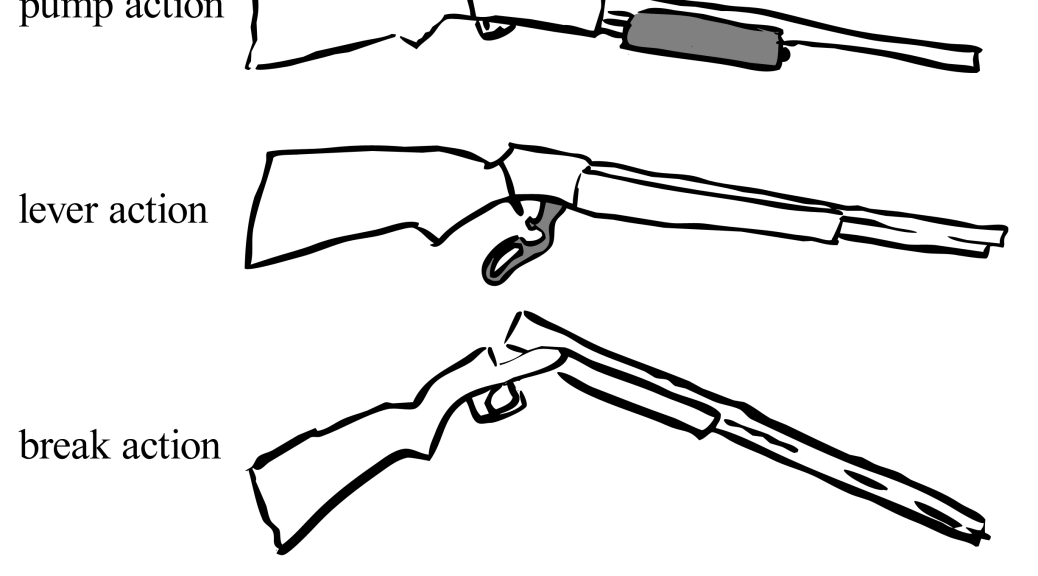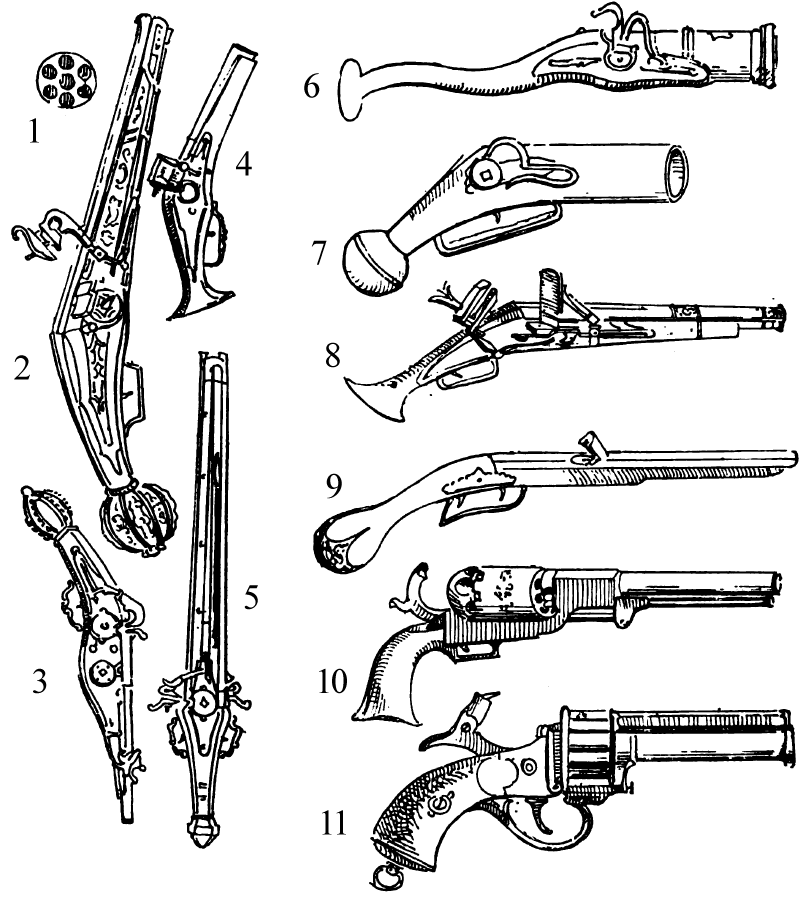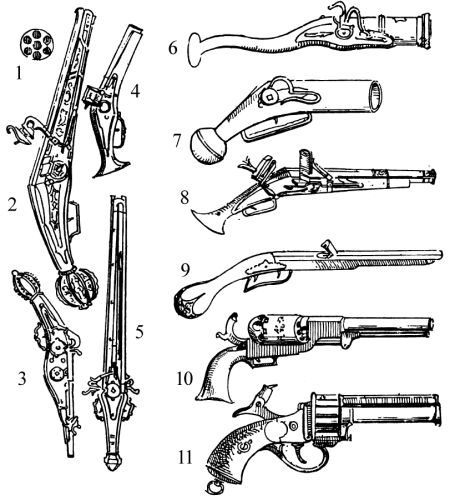Let’s face it; guns are frequently found on stage, whether in straight plays, musicals, operas and even dance. The use of certain guns can instantly convey a lot of information about period, geography and even character.
If you are a gun novice, it can be helpful to learn some basic terminology and categories. Even if you cannot find the absolute perfect gun, you can at least be in the right ballpark and not have something wildly anachronistic or unrealistic on stage.
For the first bit of terminology, I’ve put together an illustration showing the most common actions of both long guns (rifles, shotguns and muskets) and handguns (or pistols). When a firearm is capable of holding more than one round of ammunition, it needs an action to clear the spent cartridge and load a new one in place. The following is by no means an exhaustive list of all actions, but you may never need to know any others unless you start delving into the more esoteric and unique firearms used throughout history.

Bolt action – To eject the cartridge and load another round, a small handle is manually lifted, pushed forward, pulled back and dropped down. Bolt actions are most commonly found on the M1903 Springfield, which was the standard infantry rifle for the US from 1903 through World War I, and is still used by drill teams and color guards today.
Pump action – This action is typically associated with shotguns; the handigrip is pumped back and forth to eject a cartridge and load another one. On rifles, it is sometimes called a “slide action”.
Lever action -Â Most famously used in Winchester rifles, which were used by Western settlers in the US in the late 19th century (ie, “The Wild West”). Lever action rifles remain popular for modern-day sportsmen and hunters.
Break-action – The weapon “breaks”, or hinges to expose the breech. When this happens, the spent cartridges are ejected, and new ammunition can be manually inserted. This action is universal in double-barrel shotguns, and can be found in various rifles and pistols as well.
Revolver – Most commonly found in handguns, though the rare revolver rifle can be found scattered throughout history. A revolving chamber holds several cartridges; when one bullet is fired, the chamber rotates to line the next cartridge up with the barrel.
Semi-automatic – A semi-automatic refers to any pistol or rifle which automatically ejects the spent cartridge and loads the next round of ammunition when the gun is fired (not to be confused with an automatic firearm, which continues firing as long as the trigger is pressed). Most modern firearms for military and law-enforcement are semi-automatic.





